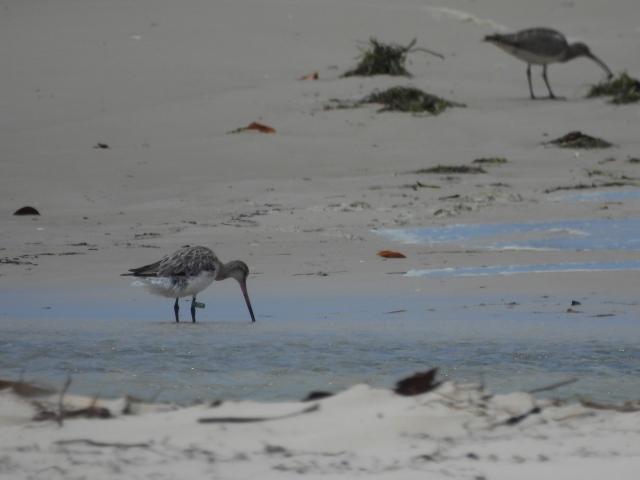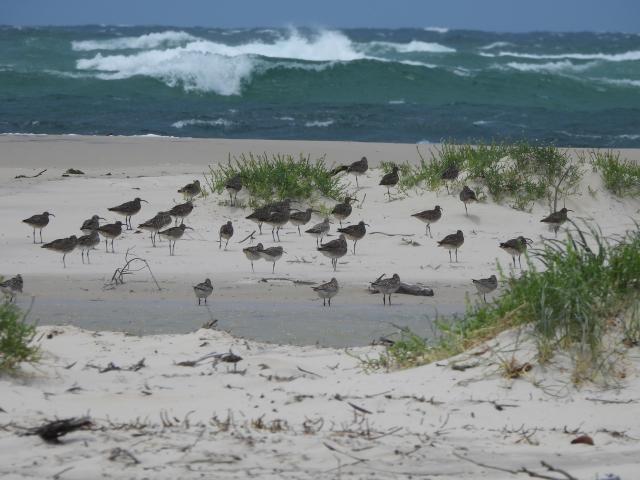
In the rarest of finds, a shorebird with an identification tag has been spotted after she arrived from a mind-blowing 10,000km non-stop flight from the Arctic.
The female Bar-tailed Godwit was sighted during a recent survey in a flock of about 120 Bar-tailed Godwits feeding on Pumicestone Passage sandbanks.
Bar-tailed Godwits are world-record holders in the longest non-stop flight. They fly directly from Alaska to Australia, sometimes taking 10 days or more. They are a similar size to the Whimbrel, but with a whitish belly and a long straight or slightly upturned bill.
Sunshine Coast Council senior coastal conservation and planning officer Dr Simone Bosshard, who sighted her through the scope, was excited by the find.
“This is my fourth year of doing surveys and it’s only the second flagged bird I’ve seen on the Sunshine Coast,” Dr Bosshard said.
“It’s very exciting because it allows us to learn more about where the bird migrates to and what areas it uses when here in Australia – and it confirms the Sunshine Coast is an important habitat for migratory shorebirds.”
The bird was identified by a green leg flag and a unique three-letter code which is used by the Queensland Wader Study Group.
Dr Bosshard said the bird was originally banded – the process by which the flag is placed on her leg – at the Port of Brisbane roost in February 2016.
“This bird has only been sighted once since she was banded in 2016 – and that was at Nudgee Beach in November 2019.
“So since then, she would have flown from here to the Arctic and back again four times.
“Sightings of flagged birds allow us to track them throughout the years without the birds having to be caught again.
“It’s an opportunity to learn more about these little miracles and how we can live with them in a wildlife-friendly biosphere.”
All sightings are recorded on the Queensland Wader Study Group website at waders.org.au
Migratory shorebirds are the world’s most threatened species of birds flying more than 10,000km from Siberia and Alaska all the way to our Sunshine Coast shoreline.
These amazing birds spend most of their time feeding on the mudflats and sandbanks of the Pumicestone Passage and Maroochy River, as they need to more than double their body weight to store essential energy for their long journey back.
They need space and peace to rest and recover and prepare for their return journey.
Share our coast with the shorebirds:
– Observe from a distance using binoculars.
– Choose a location away from the birds for your activities.
– Keep your dogs under control.
– Take your rubbish home.
Regular surveys of shorebirds are done as part of the Shorebird Conservation Action Plan, which guides council’s contribution to the world-wide conservation efforts to protect the species.







